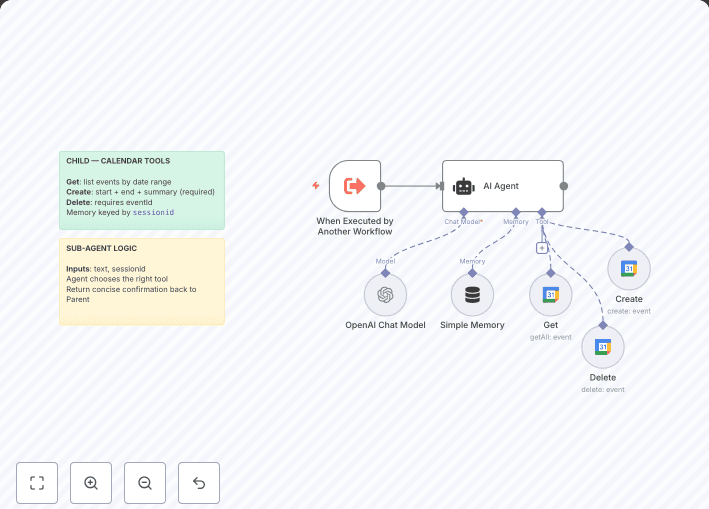How It Works ⚙️
This workflow is a comprehensive, AI-powered system that acts as a virtual content manager for creators and marketing teams. It automates the entire content lifecycle, from ingestion and analysis to multi-channel distribution and performance logging.
- Multi-Source Ingestion : The workflow starts by ingesting new content from a trigger, such as a WordPress blog post or an RSS Feed from a YouTube channel.
- AI-Powered Analysis : The new content is sent to an OpenAI (GPT-4) node, which performs a series of high-value tasks. It instantly creates a summary, extracts keywords, analyzes the sentiment, and generates tailored post drafts for different social media platforms.
- Smart Distribution : A Buffer node then takes these AI-generated, platform-specific posts and schedules them for optimal times across your social media channels like Twitter , LinkedIn , and Facebook.
- Centralized Archiving : All of the content data, including the AI-generated summaries and insights, are automatically logged into a Google Sheets database. This creates a powerful, searchable archive and an analytics dashboard for tracking content performance.
How to Set Up 🛠️
- Import the Workflow : Copy the provided workflow JSON and import it into your n8n instance.
- Configure Credentials :
- OpenAI : Add your API Key.
- WordPress : Add your API credentials.
- Buffer : Add your API credentials.
- Google Sheets : Add your OAuth2 credentials.
- Customize Workflow Nodes :
- Node 1 (
WordPress Trigger): Select your WordPress credential. You can also add other trigger nodes like RSS Feed Read Trigger if needed.
- Node 2 (
OpenAI): You can customize the prompt to get different kinds of output or translate into more languages.
- Node 4 (
Buffer): Select the social media profiles you want to post to.
- Node 5 (
Google Sheets): Replace the placeholder [YOUR SPREADSHEET ID] and [YOUR CONTENT LOG SHEET NAME] with your own details and map the data columns.
- Save & Activate: Once all settings and credentials are configured, save the workflow and click the "Inactive" toggle in the top-right corner to make it live.


